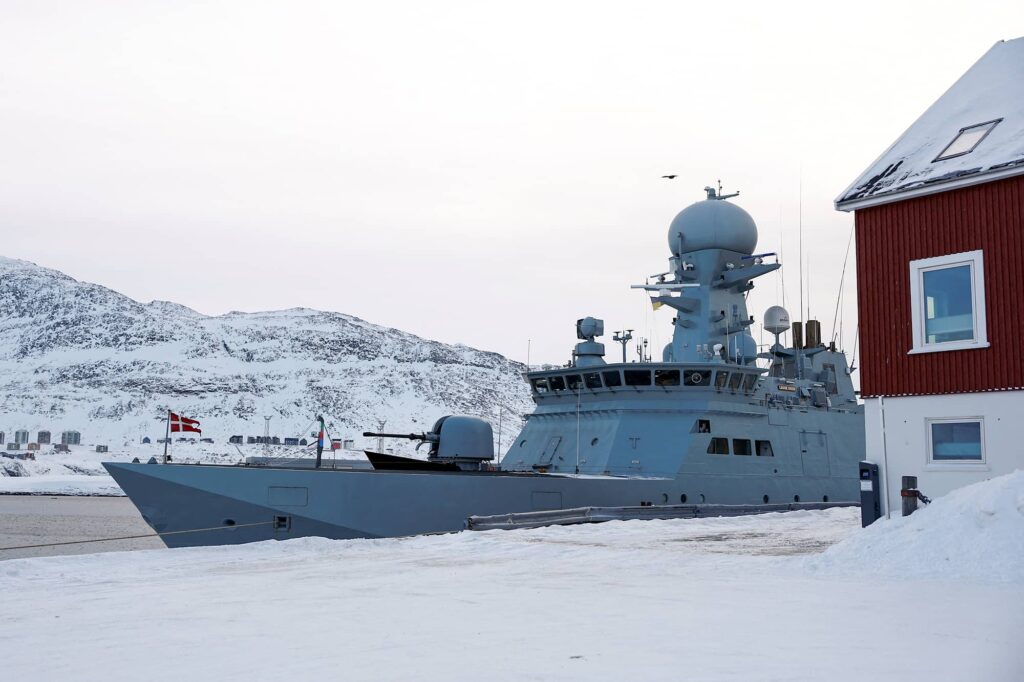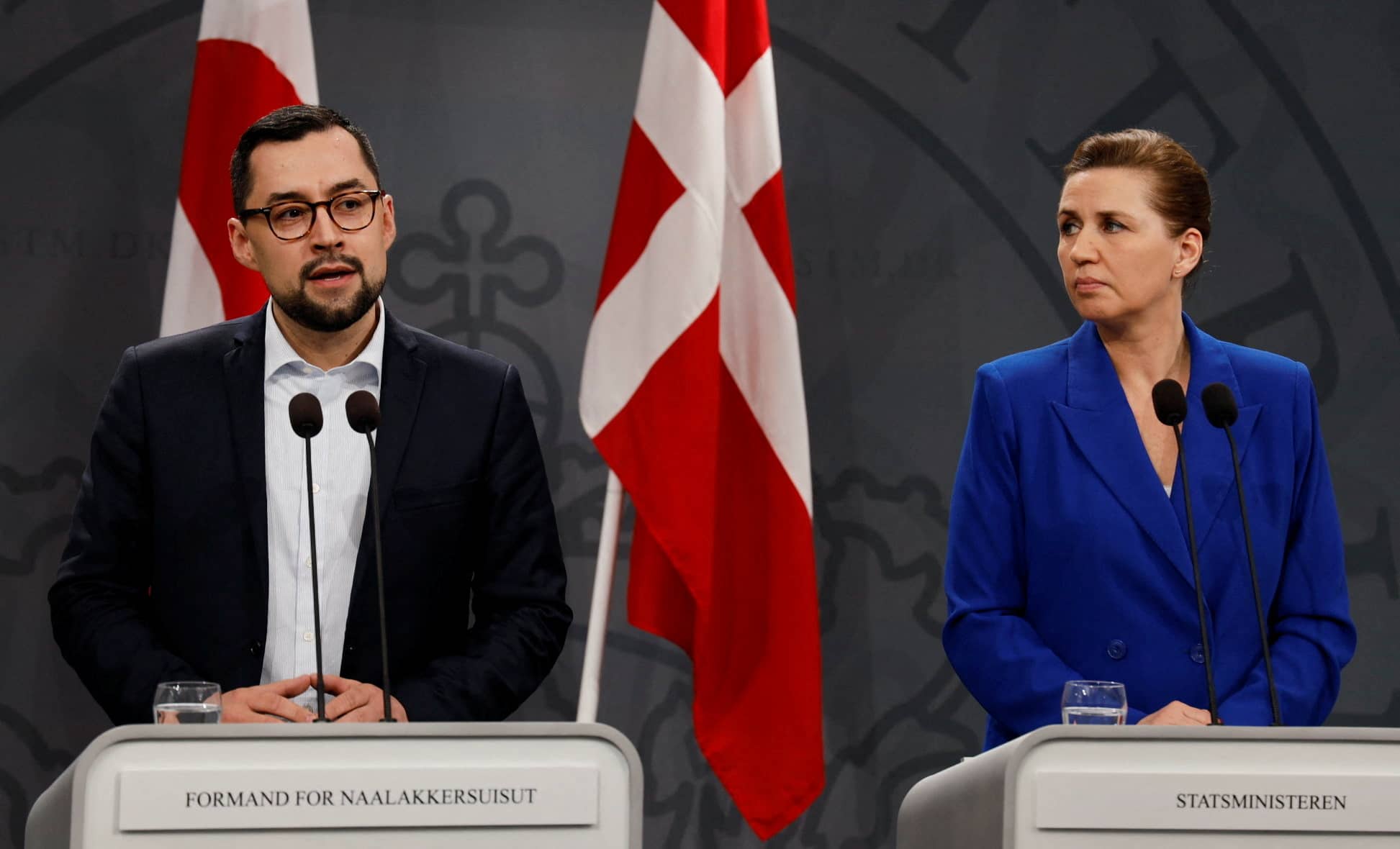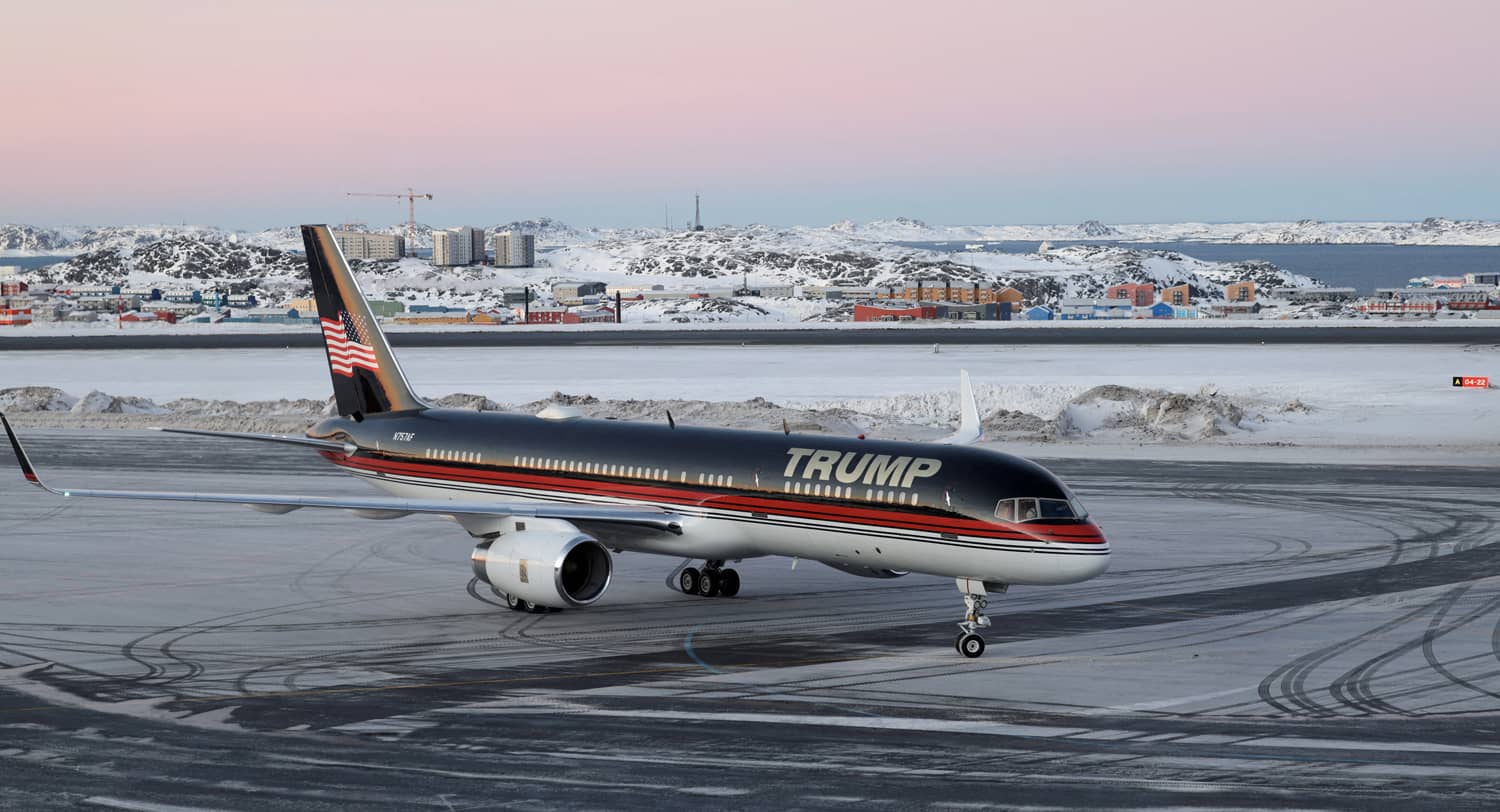“Ownership and control of Greenland is an absolute necessity,” posted President Donald Trump in announcing tech executive Ken Howery as his nominee for ambassador to Denmark, which counts the world’s largest island as one of its two “autonomous territories.”
Feverish international reactions followed. The governments of both Denmark and Greenland repeatedly declared the island is “not for sale.” Denmark’s king changed the national coat-of-arms for the first time since 1972 to feature more prominently the heraldic symbols of Greenland and his realm’s other remaining “autonomous territory,” the Faroe Islands. Trump has not relented, however, treating these refusals as little more than the opening of a successful real estate deal driven by an acute and well-informed appreciation of the US’s evolving national security interests. Donald Trump Jr. visited Greenland in a high-profile mission that was covered by the media. United Airlines is scheduled to open direct service from Newark, New Jersey, to Nuuk, Greenland’s capital, in June 2025.
Greenland has long been important in US strategic calculations. The second Trump administration’s deliberations about purchasing the island are in fact the sixth time Washington has entertained the issue. As long ago as 1867 – not coincidentally the year in which the United States purchased Alaska from Russia – acquiring Greenland was considered alongside the potential acquisition of the Danish West Indies. The US Senate rejected the sale offer, which Denmark’s government had approved, citing extreme weather concerns. Nevertheless, in the 1880s American explorers carried out the first complete scientific charting of Greenland’s western and northern coasts and established long-term American territorial claims. Washington only relinquished those claims in 1916, when the US once again considered purchasing the Danish West Indies, which became the US Virgin Islands the following year. Greenland was left out of the deal, but a subsequent US-Danish protocol signed in 1920 echoed the principles of the Monroe Doctrine of 1823, by establishing that no third country would be permitted to acquire the island. Denmark’s full ownership remained unrecognized until 1933, however, when the post-World War I World Court arbitrated rival Norwegian claims.
Under William McKinley, whom Trump praised in his second inaugural, the US acquired Spain’s remaining colonial possessions in both the Caribbean, where Germany was active, and in the Pacific, where Japan had designs on the Philippines. The need to defend American commercial and strategic interests against great power rivals became acute. As the brief Spanish-American War of 1898 demonstrated, Spain was incapable of defending its possessions, some of which were in open rebellion. In the Caribbean, they were already economically dominated by American interests. McKinley also added Hawaii, which had become a weak republic run by American settlers, where Japan also had ambitions. McKinley further laid the diplomatic groundwork for the construction of the Panama Canal, a waterway conceived in significant part to facilitate faster movement of American warships from the Atlantic to face off against Japan.
Acquiring the Danish West Indies lay in the future, but the prospect of their acquisition by Germany during World War I reinforced American possession as a strategic imperative even though Denmark was neutral in that conflict.
Greenland’s geopolitical importance never really left American consideration. In World War II, after Denmark collapsed in just 12 hours of fighting on April 9, 1940, its ambassador in Washington acted on his own initiative and, in consultation with Greenland’s local authorities, conceded American defensive rights. US coast guard vessels arrived within six weeks, with a fuller military presence established in 1941.
US military presence has continued in some form to the present day. Although Denmark refused a $100 million purchase offer from Harry Truman in 1946, a broad agreement signed in 1951, which remains in effect, conceded nearly unlimited US rights to defend Greenland. During the Cold War, the island hosted dozens of US installations, offered open transit rights for US personnel and vessels, and accompanied long-term agreements on mining rights in vital minerals. Facilities in Greenland were integrated into ballistic missile early warning systems, the US Strategic Air Command, and the NORAD defense network. The American air base at Thule, 750 miles north of the Arctic Circle, opened in 1953 and at times hosted thousands of American servicemen. In 2020 it was renamed Pituffik and is now a US Space Force installation.

Continued American defense of Greenland remains vital. Denmark’s defense budget languishes at just $5 billion per annum, compared to over $800 billion for the US. The Danish armed forces have fewer personnel than New York City’s police department. Its defensive force for Greenland consists of one observation plane, four customs inspection vessels, and several dogsled teams. After Trump mentioned possibly acquiring Greenland, the Danes pledged an additional inspection vessel and more dogs. Denmark’s annual subsidy for Greenland, which suffers from relative underdevelopment, is about $600 million, or roughly the same amount as the municipal budget of Providence, Rhode Island. In other words, Greenland is every bit as exposed to hostile foreign powers as the decrepit Spanish Empire’s possessions were in 1898, as the Danish West Indies were in 1916, and, indeed, as Greenland itself was from the 1940s to the 1980s.
Greenland’s vulnerability has become more acute over the past decade. Regardless of the cause, the Arctic is warming at a fast pace, opening its sea lanes to shipping and exposing its resources for easier development. The Arctic Sea may be on track for historic ice-free seasons in the near future. Since 1996, an intergovernmental Arctic Council comprised of regionally important countries – the US, Canada, Denmark, Iceland, Sweden, Finland, and Russia – has attempted with limited success to regulate the region’s affairs (Russia has been ostracized since its 2022 invasion of Ukraine), and most analysts agree that it is a major zone of geopolitical competition.
Since about 2012, China has also become an interested party, working heavily with Russia, its “unlimited ally” since 2022, to develop that country’s Arctic ports, which supply Siberian raw materials to China and form part of an abbreviated shipping route – some 40 percent shorter than the conventional passage around South Asia and through the Suez Canal – to carry Chinese goods to markets in the Western Hemisphere. China and Russia conduct joint military operations in the Arctic, where China is also developing a tourism industry. In 2017, Beijing preposterously proclaimed China a “near-Arctic state” and branded its Arctic projects the “Polar Silk Road” as part of its global “Belt and Road Initiative” to create an integrated world market. Chinese investments in the Arctic are believed to total over $90 billion.
Beijing has directed a significant amount of its wealth and attention toward Greenland, a natural initiative given the island’s relative underdevelopment and Denmark’s military and economic weakness. Some mining operations have been successfully undertaken, though Greenland’s government has prevented Chinese exploitation in some spheres, citing environmental concerns. It is also concerned about China’s “debt trap” strategy in other developing countries, where China exercises significant political control in exchange for investment. Denmark’s government has, with US encouragement, also resisted Chinese offers to develop transportation facilities and infrastructure.
More importantly, Greenland has emerged as a global superpower in vitally important rare earth elements, a group of 17 minerals that are essential for high-tech production, particularly in electronics, renewable energy, and defense. The island is the world’s eighth largest repository of these minerals, with an estimated 1.5 million metric tons under its surface, in addition to many other important mineral and energy resources. The entire United States, by comparison, has only slightly larger rare earth mineral deposits, with 1.8 million tons, while China has over eight million tons and aggressively guards its near monopoly by both protecting its domestic deposits and taking control of deposits in numerous other countries. Currently, China supplies the United States – its greatest strategic rival – with some 72 percent of its total supply of rare earth minerals. In other categories, such as processed graphite, which is used in the battery anodes that power electric vehicles, China produces 100 percent of the current global supply, while Greenland is known to have large graphite deposits.

Estimates hold that Greenland, if properly developed, could supply as much as 25 percent of the world’s rare earth mineral market by 2030. Denying the US that large alternative source in Greenland is thus a major strategic imperative for Beijing, while acquiring it is vital for US interests. This is particularly true under the second Trump administration, which seeks to restore US energy independence, break dependency on foreign supply chains in vital industries, and solidify its leadership in high-tech development. While controlling Greenland would likely be decisive in achieving those goals, not controlling will almost certainly frustrate them to the benefit of the Chinese.
Chinese hegemony could also potentially threaten an older US strategic imperative – the security of the Atlantic sea lanes, which remain vital for trade with Europe. As was the case in the 1940s, a rival power’s control of North Atlantic ground territory could lead to military challenges or other undesirable obstacles.
Politically, securing Greenland presents some obstacles, but none that cannot be overcome through prudent diplomacy. Purchasing sovereign territory is less common in the modern world but not unheard of. As recently as 2017, Saudi Arabia purchased from Egypt two strategically important islands in the Straits of Tiran.
Even if Denmark remains steadfast in its refusal to sell Greenland, its hold on the island is weak. A 2009 protocol established that Greenland’s population can declare independence by majority vote in a referendum. The island’s current governing party adopted achieving independence as a major goal in February 2024 and has reiterated it in relation to the recent headlines, while nevertheless disclaiming any immediate willingness to join the United States. In the event of a conflict with China, however, America could expand its existing military presence to a preventative occupation, as it did without any pre-existing military presence in World War II, and in invocation of the Monroe Doctrine. Notably, President Trump stated that he would not rule out acquiring Greenland by military means.
Washington could offer an independent Greenland a free association compact, such as those it concluded with Micronesia and the Marshall Islands in 1986, and with Palau in 1994. Those Pacific nations remain independent, but voluntarily ceded control of military, security, and some economic matters to the United States. US investment would certainly benefit Greenland’s population, which currently depends on Denmark’s small subsidy, and recall the Cold War, when Greenlanders were pleased with the economic benefits of US military investment. In those circumstances, it is not inconceivable that Greenland’s population could consider closer union.
In any case, Greenland appears to be destined for a larger American role. In January 2025, a congressional resolution was introduced to empower Trump to seek its acquisition. A subsequent resolution proposed in February raises the possibility of renaming it “Red, White, and Blueland.” Who knows if that is a step too far?

